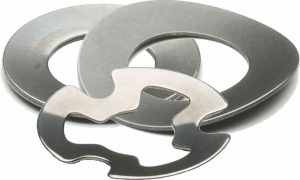
Shopping for flat springs can be daunting. Unlike mechanical springs, they don’t feature a traditional coiled design. Flat springs can still store mechanical energy, but they feature a flat design.
Flat springs are manufactured from flat stock. As shown in the adjacent photo, they come in a variety of styles. How do you choose the right flat springs exactly?
Look for a Strong Material
Regardless of how you intend to use them, you should choose flat springs made of a strong material. They must be strong enough to withstand the mechanical force to which they are exposed. All springs are designed for applications in which they are exposed to a mechanical force. Flat springs are no exception. Fortunately, you can find flat springs available in strong materials like high-carbon steel.
Consider the Style
You should consider the style when choosing flat springs. All flat springs feature a flat design, but not all of them are the same. There are many different styles of flat springs. Wave washers, for instance, are flat springs that feature a curved, wavy design. Wave washers are available with and without a gap. There are also canonical clover dome springs that are characterized by their clover-like shape.
Beware of Burrs
If you’re going to buy flat springs, you should beware of burrs. Burrs are rough or sharp edges on metal objects. When cutting metal objects, manufacturers may leave behind burrs. There are deburred flat springs, however, that have smooth and finished edges. They undergo an extra step in the production process to remove any lingering burrs.
Consider the Spring Rate
You should consider the spring rate when choosing flat springs. Spring rate is a metric for how much a given spring compresses when exposed to a mechanical load. Some flat springs will decompress more when exposed to the same mechanical load as other flat springs. Spring rate is a measurement of this load-based compression.
Make Sure the Size Is Right
The size matters when choosing flat springs. While they are all flat — or at least mostly flat — flat springs are available in a variety of sizes. Some of them are larger than others. Most flat springs are used in conjunction with a fastener. If a flat spring is too big or too small, it may not accommodate the fastener. Flat springs are available in metric and standard sizes. Regardless, you need to ensure they are the right size for your application.
